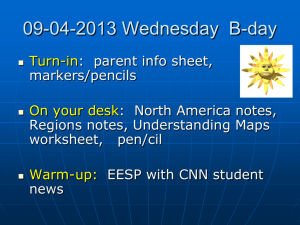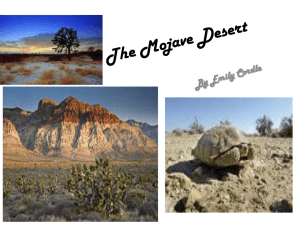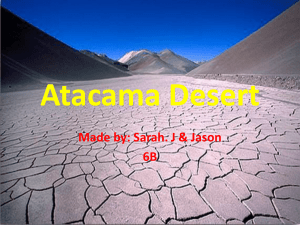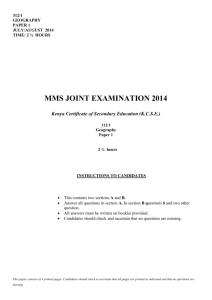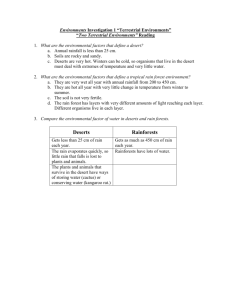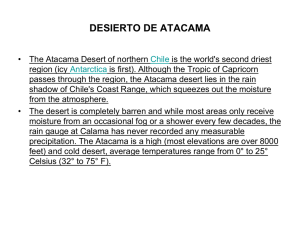Page 17-Answer Key
advertisement
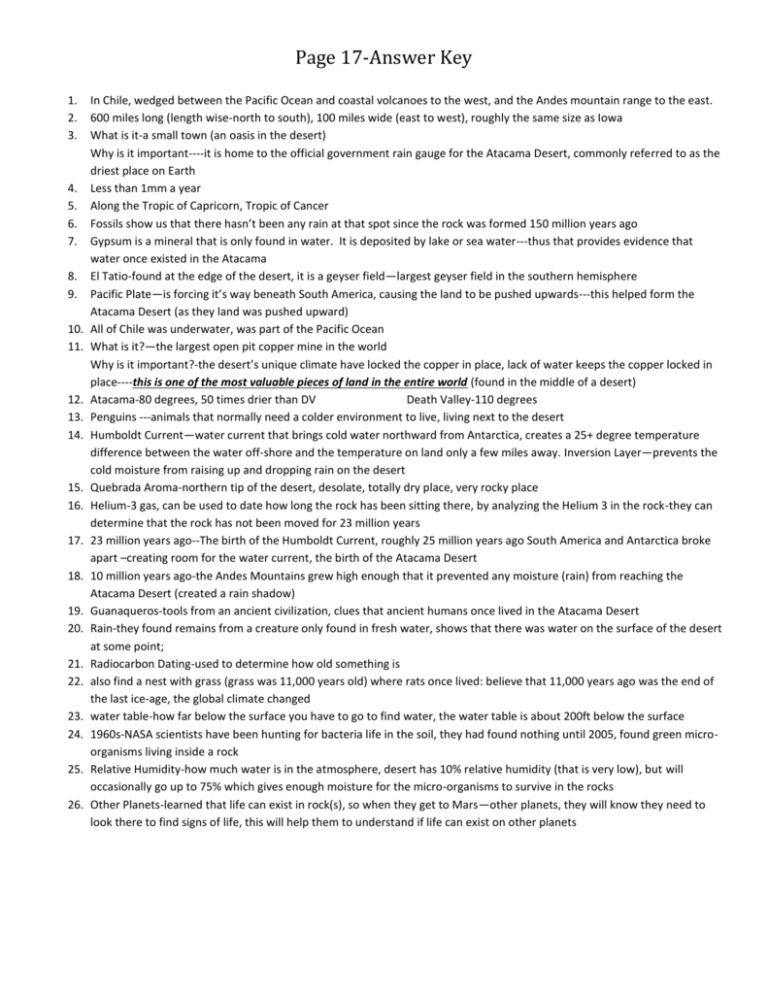
Page 17-Answer Key 1. 2. 3. 4. 5. 6. 7. 8. 9. 10. 11. 12. 13. 14. 15. 16. 17. 18. 19. 20. 21. 22. 23. 24. 25. 26. In Chile, wedged between the Pacific Ocean and coastal volcanoes to the west, and the Andes mountain range to the east. 600 miles long (length wise-north to south), 100 miles wide (east to west), roughly the same size as Iowa What is it-a small town (an oasis in the desert) Why is it important----it is home to the official government rain gauge for the Atacama Desert, commonly referred to as the driest place on Earth Less than 1mm a year Along the Tropic of Capricorn, Tropic of Cancer Fossils show us that there hasn’t been any rain at that spot since the rock was formed 150 million years ago Gypsum is a mineral that is only found in water. It is deposited by lake or sea water---thus that provides evidence that water once existed in the Atacama El Tatio-found at the edge of the desert, it is a geyser field—largest geyser field in the southern hemisphere Pacific Plate—is forcing it’s way beneath South America, causing the land to be pushed upwards---this helped form the Atacama Desert (as they land was pushed upward) All of Chile was underwater, was part of the Pacific Ocean What is it?—the largest open pit copper mine in the world Why is it important?-the desert’s unique climate have locked the copper in place, lack of water keeps the copper locked in place----this is one of the most valuable pieces of land in the entire world (found in the middle of a desert) Atacama-80 degrees, 50 times drier than DV Death Valley-110 degrees Penguins ---animals that normally need a colder environment to live, living next to the desert Humboldt Current—water current that brings cold water northward from Antarctica, creates a 25+ degree temperature difference between the water off-shore and the temperature on land only a few miles away. Inversion Layer—prevents the cold moisture from raising up and dropping rain on the desert Quebrada Aroma-northern tip of the desert, desolate, totally dry place, very rocky place Helium-3 gas, can be used to date how long the rock has been sitting there, by analyzing the Helium 3 in the rock-they can determine that the rock has not been moved for 23 million years 23 million years ago--The birth of the Humboldt Current, roughly 25 million years ago South America and Antarctica broke apart –creating room for the water current, the birth of the Atacama Desert 10 million years ago-the Andes Mountains grew high enough that it prevented any moisture (rain) from reaching the Atacama Desert (created a rain shadow) Guanaqueros-tools from an ancient civilization, clues that ancient humans once lived in the Atacama Desert Rain-they found remains from a creature only found in fresh water, shows that there was water on the surface of the desert at some point; Radiocarbon Dating-used to determine how old something is also find a nest with grass (grass was 11,000 years old) where rats once lived: believe that 11,000 years ago was the end of the last ice-age, the global climate changed water table-how far below the surface you have to go to find water, the water table is about 200ft below the surface 1960s-NASA scientists have been hunting for bacteria life in the soil, they had found nothing until 2005, found green microorganisms living inside a rock Relative Humidity-how much water is in the atmosphere, desert has 10% relative humidity (that is very low), but will occasionally go up to 75% which gives enough moisture for the micro-organisms to survive in the rocks Other Planets-learned that life can exist in rock(s), so when they get to Mars—other planets, they will know they need to look there to find signs of life, this will help them to understand if life can exist on other planets

